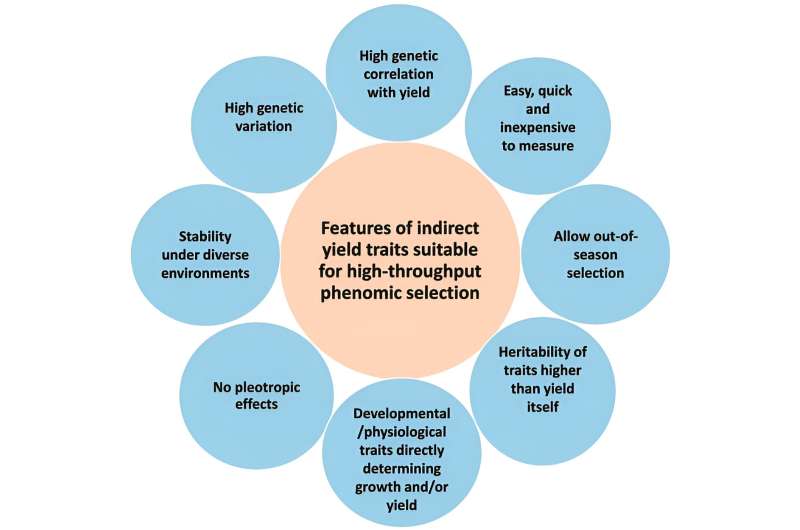This article has been reviewed according to Science X's editorial process and policies. Editors have highlighted the following attributes while ensuring the content's credibility:
fact-checked
trusted source
proofread
The emerging role of genomics and high-throughput phenomics in sugarcane breeding

Sugarcane, a crucial worldwide food and bioenergy crop, accounts for approximately 80% of the world's sugar production, with its largest cultivation in Brazil and India. As the 5th largest crop by production value and acreage, it presents unique breeding challenges due to its complex polyploid genome, derived from interspecific hybridization.
Current sugarcane breeding methods, involving a lengthy 10- to 12-year multistage selection process, have resulted in slower yield improvements compared to other major crops. The main obstacles in the breeding process include the extended cycle, challenging phenotyping due to substantial biomass, and limited heritability of crucial traits.
These issues, particularly the logistical challenges in accurate phenotyping, have hindered genetic gains. Addressing these constraints, specifically through developing efficient, high-throughput phenotyping methods, presents a critical research opportunity to enhance sugarcane breeding and expedite yield improvements.
In July 2023, Plant Phenomics published a perspective article titled "A Combined Genomics and Phenomics Approach is Needed to Boost Breeding in Sugarcane."
This paper points to the slow improvement in sugarcane yields through traditional breeding methods, which has prompted a shift toward molecular marker-assisted selection (MAS) over the past 30 years. This transition is marked by the evolution of sugarcane DNA marker systems, moving from hybridization-based to DNA-sequence-derived single-nucleotide polymorphism (SNP) markers, enabled by advancements in next-generation sequencing technologies.
Genomic selection (GS), a method using large numbers of trait-linked DNA markers for whole-genome profiling, has emerged as a more effective approach for estimating the genetic merit of sugarcane clones.
Studies have shown that GS is superior to conventional selection methods in improving cane yield, sugar content, and disease resistance. However, the implementation of GS in sugarcane breeding is contingent on regular, accurate phenotyping of diverse genotypes. This need is driven by the complexity of sugarcane's traits, such as yield and sugar content, which are influenced by non-additive genetic effects.
High-throughput phenomics, which involves extensive data collection on plant growth and development, is seen as a solution to increase the efficiency and reduce the cost of creating reliable GS training sets and phenotypic data. Parallel advancements in sensor-based phenotyping have been significant, though its application in commercial crop breeding is still developing.
In other crops like cereals, phenomics has been instrumental in understanding complex physiological aspects and developing yield prediction models using indirect traits. Similarly, in sugarcane, high-throughput phenotyping of traits like canopy development and leaf nitrogen content is proving valuable for yield prediction and breeding.
Sugarcane's suitability for field phenomics, due to its large biomass and the environmental challenges it faces, presents unique opportunities. Research has demonstrated the potential of using indirect yield traits, such as canopy temperature, for improving clonal selection.
Overall, the integration of genomics, phenomics, and crop modeling in sugarcane breeding is advancing, with GS and high-throughput phenomics poised to become core components of the breeding process in leading sugarcane industries.
This integration promises to transform sugarcane breeding, similar to the progress seen in crops like drought-tolerant maize, thereby enhancing genetic gains and yield improvements.
More information: Ting Luo et al, A Combined Genomics and Phenomics Approach is Needed to Boost Breeding in Sugarcane, Plant Phenomics (2023). DOI: 10.34133/plantphenomics.0074
Provided by NanJing Agricultural University





















